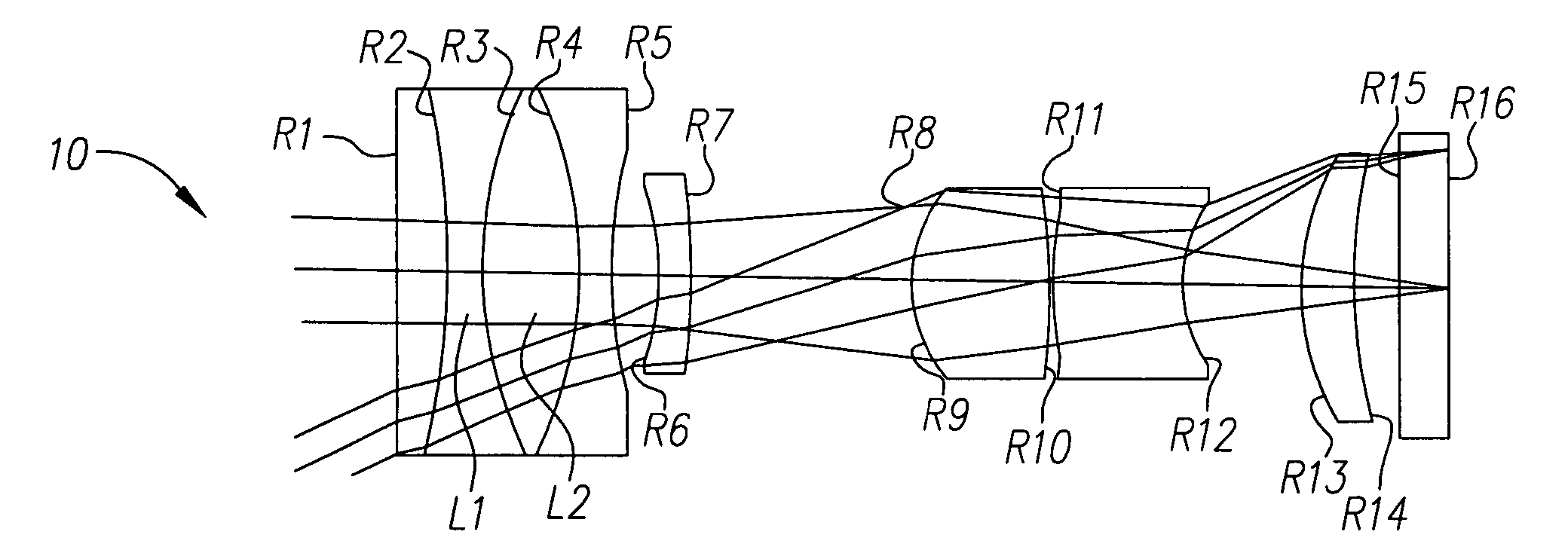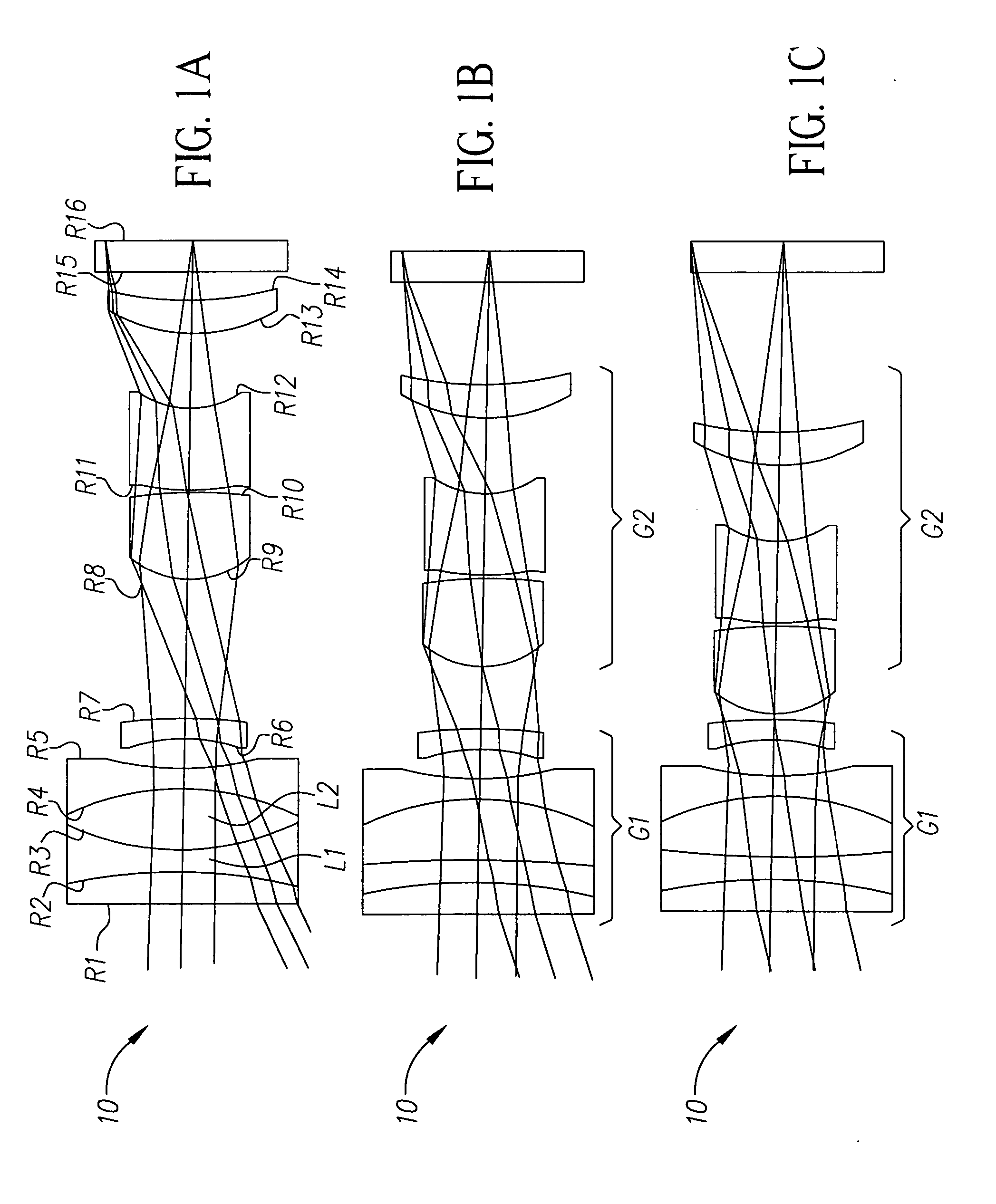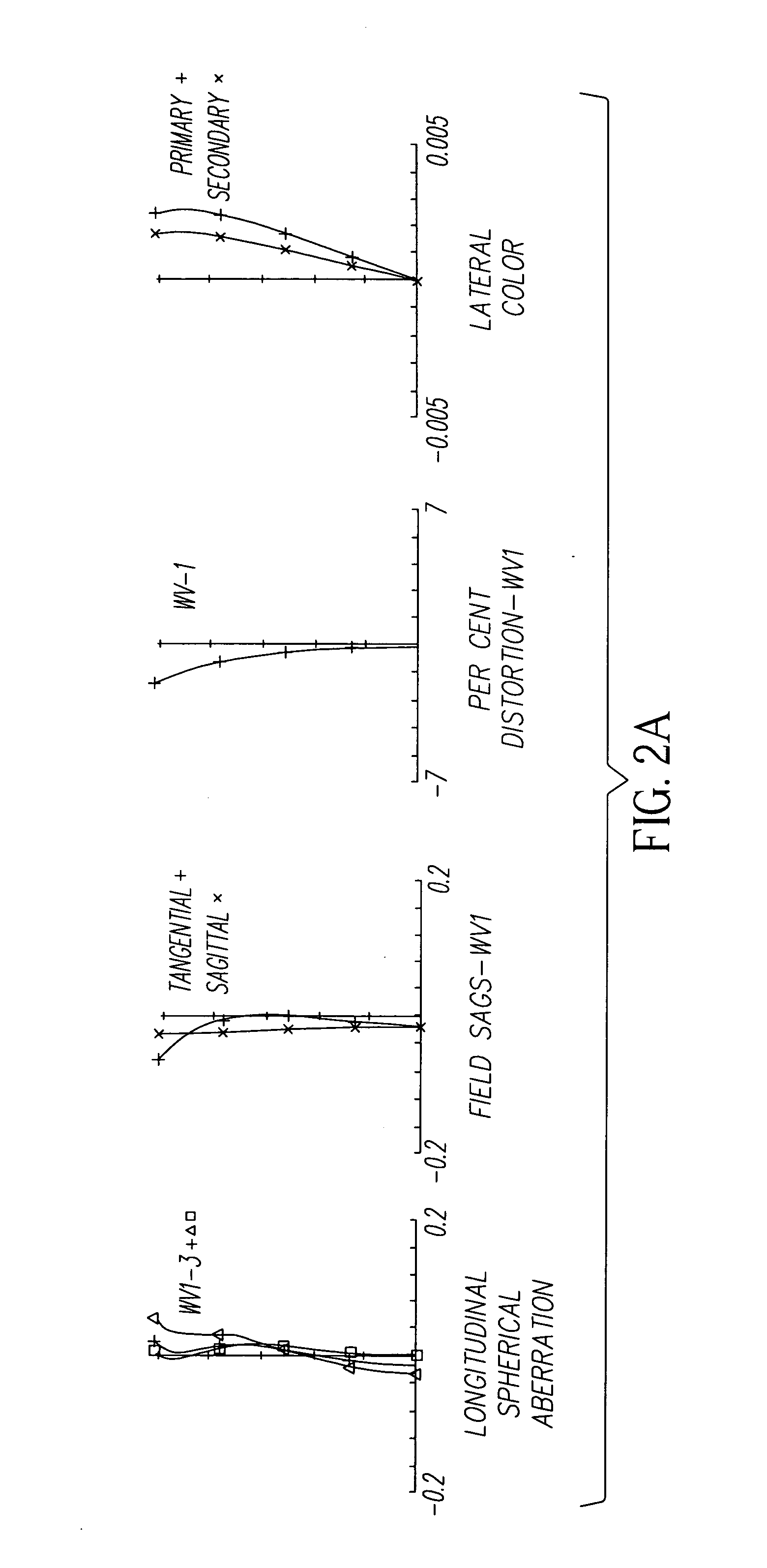Zoom lens system having variable power element
a power element and zoom lens technology, applied in the field of zoom lens systems, can solve the problems of liquid crystal lenses with minimal adjustment through electrode modification, added cost, complexity, and size to the lens system, and affecting the design of lenses
- Summary
- Abstract
- Description
- Claims
- Application Information
AI Technical Summary
Benefits of technology
Problems solved by technology
Method used
Image
Examples
Embodiment Construction
[0025] The present description will be directed in particular to elements forming part of, or cooperating more directly with, apparatus in accordance with the present invention. It is to be understood that elements not specifically shown or described may take various forms well known to those skilled in the art.
[0026] Referring generally to FIGS. 1A-8C, the present invention incorporates at least one variable optical power lens element in a variable focal length lens system 10, 20. When compared to lens systems that do not incorporate at least one variable optical power lens element, this results in the reduction of at least one moving group of the variable focal length lens system and reduces the overall length of the variable focal length lens system 10, 20. Also, the diameter of the most object side lens element of the system can be reduced depending on the specific application contemplated.
[0027] When a beam of light is obliquely incident on a refracting surface, astigmatism i...
PUM
 Login to View More
Login to View More Abstract
Description
Claims
Application Information
 Login to View More
Login to View More - R&D
- Intellectual Property
- Life Sciences
- Materials
- Tech Scout
- Unparalleled Data Quality
- Higher Quality Content
- 60% Fewer Hallucinations
Browse by: Latest US Patents, China's latest patents, Technical Efficacy Thesaurus, Application Domain, Technology Topic, Popular Technical Reports.
© 2025 PatSnap. All rights reserved.Legal|Privacy policy|Modern Slavery Act Transparency Statement|Sitemap|About US| Contact US: help@patsnap.com



